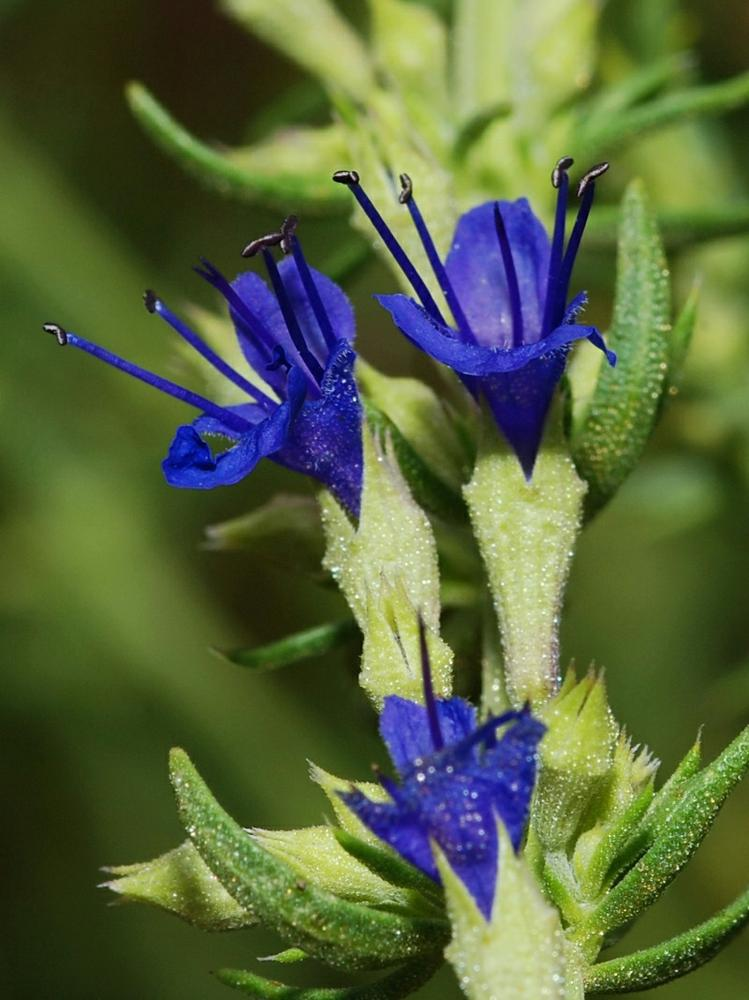Hyssop Monograph
- elysevictoria15
- Nov 30, 2021
- 3 min read
This herb has many benefits for the body and also can be used in your food as a spice!
Hyssop is an angiosperm and a eudioct(Plants Profile for Ledum Groenlandicum). It comes from the mint family and its genus is Hyssopus and its species is officinalis. A common name is Hyssop(”Powered by WordPress.”, Hyssop).
From seed:

Overview:

Flowers:

Leaves and stem:

Roots:

Hyssop has a square stem and opposite leaves with a raceme of flowers near the top of the stem. The leaves are lance-like leaves with serrated edges. The flowers are purple with four stamens and two lobes facing up and three lobes facing down. Also, it has both male and female organs and is pollinated by bees. It is an evergreen plant and grows to about 2x2 feet(Pfaf Plant Search).
One herb that could easily be mistaken for Hyssop is Lavender. Both colors of the plant are similar and they have opposite leaves and a square stem( all characteristics of the mint family). Since they are both in the mint family, it is not surprising that they look similar; however, if one looks closely, one will see some differences. Unlike Hyssop, Lavender’s stem has less leaves on it leading up to the raceme of flowers. Also, instead of the flowers having two lobes facing up and three lobes facing down, Lavender has five, fused petals facing flat towards the sky. When looking from afar these plants look almost exact, yet when taking a closer look, one can see the differences.
Hyssop’s native region includes the middle east and southern Europe; however, since it is easy to grow, many have grown it in gardens around the United states. Here is the range map for the United States.

It is best to harvest Hyssop right before it begins to flower. This is the time when the oils are at its best. According to herbmentor, “The aerial portions are harvested, cutting just above the woody stems(”Powered by WordPress.”, Hyssop).
Hyssop is a warming herb and some constituents include being an anti-spasmodic, anti-inflammatory, anti-viral, expectorant, vulnerary, diaphoretic, carminative, anti-rheumatic, pectoral, and an emmenagogue. Additionally, some herbal actions include standing against colds, flu, bruises, bronchitis, viral infections, arthritis, digestion, fevers, and toothaches(”Powered by WordPress.”, Hyssop).
A study was done to see the effects of Hyssop on AIDS. This experiment was done by in vitro and showed significantly that Hysopp officinalis halted the increase of HIV infections. It was done by using a MTT assay and a 50% hydroalcoholic extract. This study and a similar one have been done but nothing has been tested yet in vivo only in vitro(“Screening of Selected Plant Extracts for in Vitro Inhibitory Activity on Human Immunodeficiency Virus”).
Hyssop can be used as a tea, syrup, a tincture or a glycerite extraction, minimal amounts in cooking, a bath herb in large quantities, and a strewing herb. It is best to use the parts when it’s just about to flower when it’s the most aromatic. Also, one should cut above the woody stems(”Powered by WordPress.”, Hyssop).
Here is a great recipe for a Hyssop oxymel:
Ingredients: 1.) Hyssop (fresh or dried) 2.) Good quality honey 3.) Apple cider vinegar 4.) Jar with a plastic lid
(“Powered by WordPress,” Oxymel).
Instructions: 1.) To make your hyssop oxymel, fill a jar lightly with chopped fresh hyssop herb. (If using dried hyssop just fill the jar half way with hyssop.) 2.) Next fill the jar about 1/3 of the way full with honey. (For a sweeter and thicker preparation fill the jar half full with honey.) 3.) Then fill the jar the rest of the way with the vinegar. Vinegar can corrode a metal lid, so you’ll need to cover it with a plastic lid, or place a barrier between the metal lid and the liquid. 4.) Place a label on it and let it sit for 2-4 weeks. 5.) Strain it well. Label and bottle. Some things to remember about Hyssop is that it should not be used during pregnancy since it is an emmenagogue and should not be used in large doses. Large quantities of the essential oil have been known to account for seizures. Thankfully, no medications have been known to interact with this herb(”Powered by WordPress.”, Hyssop).
This is an awesome herb that has been around for many years and has benefited people for centuries!
Sources:
Plants Profile for Ledum Groenlandicum (Bog Labrador Tea), https://plants.usda.gov/core/profile?symbol=HYOF
Pfaf Plant Search, pfaf.org/user/Plant.aspx?LatinName=Hyssopus officinalis.
“Screening of Selected Plant Extracts for in Vitro Inhibitory Activity on Human Immunodeficiency Virus.” GreenMedInfo | Blog Entry, 17 Feb. 2010, www.greenmedinfo.com/article/hyssop-and-dittrichia-viscosa-have-anti-hiv-1-activity.
“Powered by WordPress.” Log In ‹ HerbMentor - WordPress, herbmentor.learningherbs.com/herb/hyssop/. “Powered by WordPress.” Log In ‹ HerbMentor - WordPress, herbmentor.learningherbs.com/articles/remedies-recipes/hyssop-oxymel/.





Comments